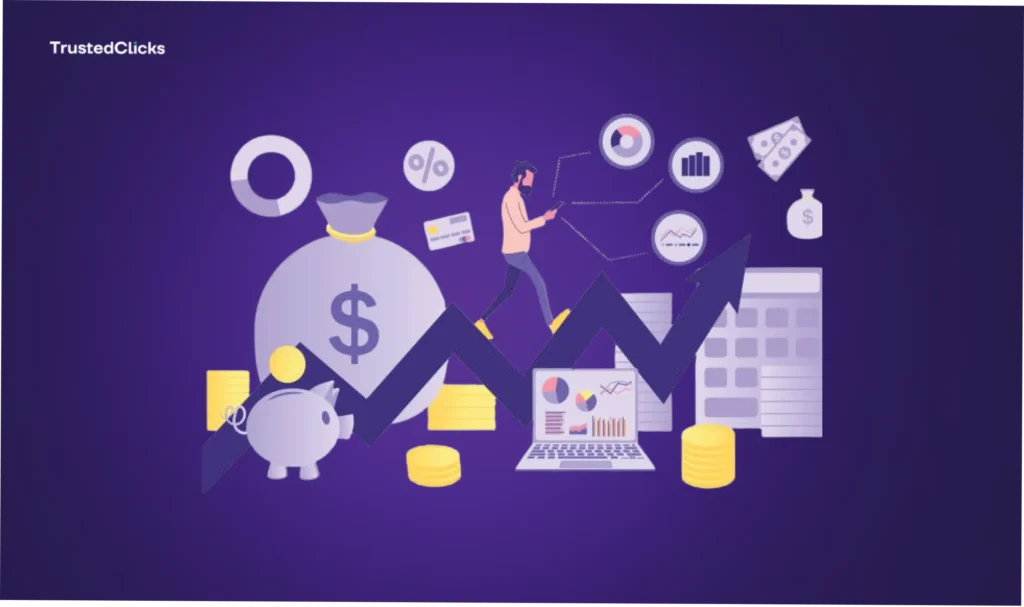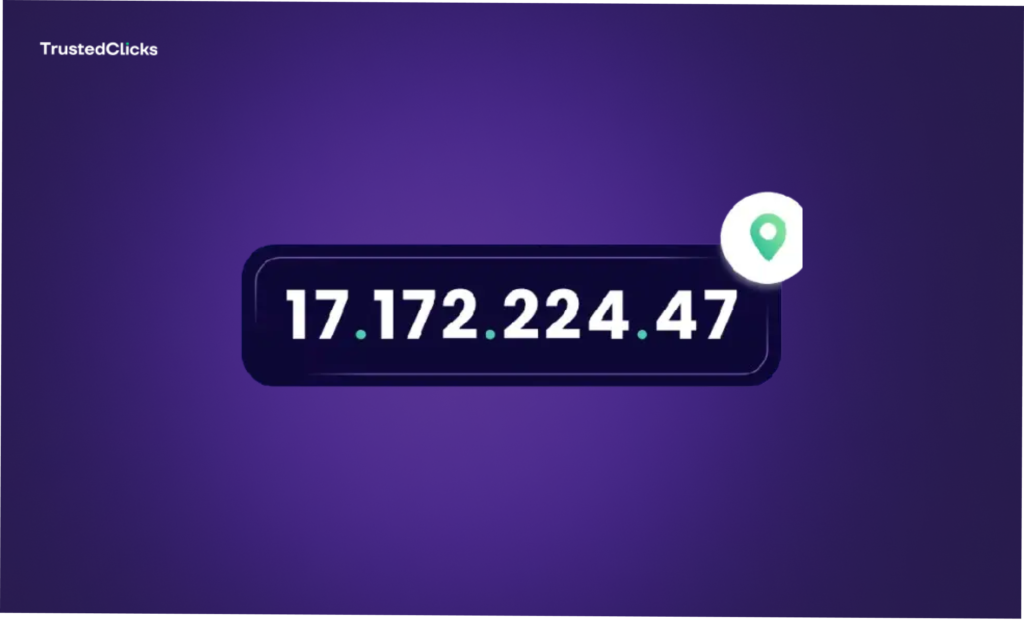- Website security, E-Commerce Security
Is Your Online Traffic Friend or Foe?


What’s an IP Score, Anyway?
Picture an IP score as a reputation report card for an IP address. Every device online—your laptop, phone, or even that smart fridge—gets assigned an IP address to communicate with the internet. An IP score is a number, typically on a scale from 0 to 1, that rates how trustworthy that address is. Low score? It’s probably a saintly user streaming cat videos. High score? It could be a bot, a scammer, or worse, lurking in the shadows.
These scores aren’t random guesses. They’re built on a mountain of data—past behavior, geolocation quirks, blacklists, and more—crunched by clever algorithms. Companies like TrustedClicks have turned this into an art form, giving us a sneak peek into the soul of every IP. But the real magic? It happens in real time, sorting the good eggs from the bad before they even knock on your digital door.
The Secret Sauce Behind IP Scoring
So, how does an IP go from a string of numbers to a friend-or-foe verdict? Let’s spill some of the secrets:
Historical Baggage
IPs have memories. If an address has been caught sending spam, launching DDoS attacks, or churning through fake accounts, that dirt sticks. IP scoring digs into this rap sheet to see if it’s a repeat offender.
Proxy and VPN Shenanigans
Hiding behind a proxy or VPN? That’s a red flag for some systems. IP scores sniff out these masked connections—especially if they’re tied to sketchy free services—and bump up the risk level.
For users with legitimate needs for managing multiple mobile accounts across different online platforms, GeeLark antidetect phone provide an alternative approach beyond simple IP masking.
Geolocation Weirdness
If an IP says it’s in Miami but the user’s billing address is in Mumbai, something’s fishy. Scoring systems cross-check location data to spot inconsistencies that scream “fraud.”
Traffic Patterns
Humans browse differently than bots. An IP blasting 1,000 requests a second or hopping continents in minutes? That’s not your average Netflix binge. Unusual activity spikes the score.
Blacklist Gossip
The internet keeps a naughty list. If an IP’s been flagged by spam filters, malware trackers, or fraud databases, its score takes a hit. Think of it as the digital equivalent of a “wanted” poster.
Why IP Scoring Is Your Unsung Hero
You might not see IP scoring in action, but it’s working overtime to keep the web safe—and sane. Here’s why it’s a big deal:
- Fraud’s Worst Nightmare
Scammers love to spoof IPs to steal logins or drain bank accounts. A high IP score can flag them before they strike, saving businesses millions and users their sanity.
- Ad Fraud’s Kryptonite
Ever hear of click farms? Bots pretending to be humans rack up fake ad impressions, costing advertisers billions. IP scoring catches these impostors, ensuring your marketing budget isn’t feeding a robot army.
- E-Commerce Shield
That $500 order from an IP with a shady score and a mismatched location? IP scoring lets retailers hit pause, verify, or block it—stopping chargebacks before they start.
- Content Gatekeeper
Streaming platforms like Netflix use IP scores to enforce regional rules. A high-scoring IP bouncing through proxies? No binge-watching for you.
- Everyday Safety
Even casual users benefit. Banks might flag a login from a risky IP, triggering extra security checks to keep your savings safe.
The Wild Stories IP Scores Tell
IP scoring isn’t just dry data—it’s a treasure trove of intrigue. Take the case of the “ghost shopper.” An online store noticed a flood of orders from a single IP, all with different names and cards. The IP score? Off the charts. Turns out, it was a fraud ring using stolen identities, busted thanks to that telltale number.
Or consider the “traveling bot.” A gaming site saw an IP logging in from Tokyo, then London, then Brazil—all in an hour. No human moves that fast. The high IP score revealed it was a bot scraping accounts, stopped dead in its tracks.
Then there’s the “proxy party.” A free proxy service promised anonymity, but its IPs lit up scoreboards with fraud flags. Users thought they were hidden; instead, they were waving a neon sign for trouble.
Friend or Foe? Decoding the Score
So, what’s a “good” IP score? It depends on who’s judging. For some systems, 0-0.25 is safe, 0.26-0.5 is iffy, and anything above 0.5 is a hard pass. Others tweak the scale—maybe 0.8 is their cutoff for “foe.” The trick is context. A moderate score from a VPN might be fine for a blog but a dealbreaker for a bank.
Here’s a quick cheat sheet:
- Low Score: Likely a legit user on a clean connection. Hello, friend!
- Medium Score: Could be a VPN, shared Wi-Fi, or a past minor offense. Proceed with caution.
- High Score: Proxy, bot, or known troublemaker. Foe alert!
How to Use IP Scoring Like a Pro
Want to harness this secret weapon? Here’s how to make it work for you:
- Pick a Scoring Service
Tools like FraudLabs, GeoIP2, or IPinfo offer plug-and-play IP scoring. Find one that fits your budget and needs—some even have free tiers.
- Set Your Rules
Decide what scores trigger action. Block the 90s? Challenge the 60s with a CAPTCHA? Tailor it to your risk appetite.
- Watch the Patterns
One high score might be a fluke; a dozen from the same IP range is a trend. Use analytics to spot the big picture.
- Layer It Up
Pair IP scoring with device checks, email verification, or geolocation for a fraud-fighting combo punch.
- Stay Flexible
IPs change hands—yesterday’s villain could be today’s hero. Keep your system dynamic to avoid blocking innocent users.
The Catch: IP Scoring Isn’t Perfect
For all its brilliance, IP scoring has quirks. Legit users on shared networks (think dorms or offices) might inherit a bad score from a neighbor’s mischief. VPN fans could get flagged just for valuing privacy. And crafty crooks? They’ll spoof IPs or hop to fresh ones to dodge the heat. It’s not a silver bullet—it’s a spotlight, illuminating risks you’d otherwise miss.
The Future of IP Scoring
As the web evolves, so does IP scoring. AI is turbocharging these systems, predicting fraud before it happens. IPv6, with its trillions of new addresses, is reshaping the game, giving scorers more data to chew on. And as privacy laws tighten, expect smarter, anonymized ways to balance security and user rights. One thing’s certain: IP scoring’s here to stay, and it’s only getting sharper.
Friend or Foe? You Decide
IP scoring is like a digital detective, whispering secrets about every visitor who knocks on your online door. Is that traffic a friend dropping by with good intentions, or a foe plotting chaos? With the right tools and a little know-how, you can crack the code—and keep your corner of the internet safer for it. So, next time you see an IP address, don’t just see numbers. See a story. And let IP scoring help you write the ending.
Frequently Asked Questions
What is IP Score ?
The IP score is a metric to assess the risk associated with a particular IP address. This score evaluates the likelihood that a user may engage in fraudulent activities, helping businesses analyze user quality and make informed decisions.
What is a good IP score ?
By analyzing a wide range of data, including historical trends and current behaviors, TrustedClicks provides IP scores from 0 to 1 and trust levels with the following ranking: Low Risk and low possibility of fraud (below 0.4): Medium Risk and no strong indication of positive or negative result (0.4- 0.85), High Risk and high possibility of fraud (above 0.85).
How can I improve my IP score ?
Utilize tools or services that provide IP score assessments to stay informed about your reputation. Analyzing user behavior is also critical; understanding patterns associated with your IP address, such as login attempts and transactions, can help you identify any suspicious activity. Implement strong security protocols by using firewalls, intrusion detection systems, and antivirus software to protect against unauthorized access and attacks. It’s also vital to keep all software up to date, including security tools and operating systems, to safeguard against vulnerabilities.
How do You Calculate IP Score ?
In TrustedClicks, IP scores are determined by evaluating multiple data points related to a user’s IP address, including location, activity patterns, and other relevant indicators. These data points are analyzed using sophisticated AI algorithms that assess and learn from behavioral patterns to improve accuracy. Alongside a defined set of risk rules, the AI modifies the score by adding or deducting points based on the identified level of risk. The resulting fraud score indicates the probability of fraudulent activity linked to that IP address.
Table of Contents
Join our community!
Subscribe to our newsletter for the latest updates, exclusive content, and more. Don’t miss out—sign up today!
Recent Posts

Maximizing IP Risk Scoring to Enhance Your Ad Campaigns and Boost ROI
- 5 mins read

The Role of IP Geolocation in E-commerce and International Marketing
- 7 mins read

IP Tracking As The Backbone of Digital Navigation
- 7 mins read



